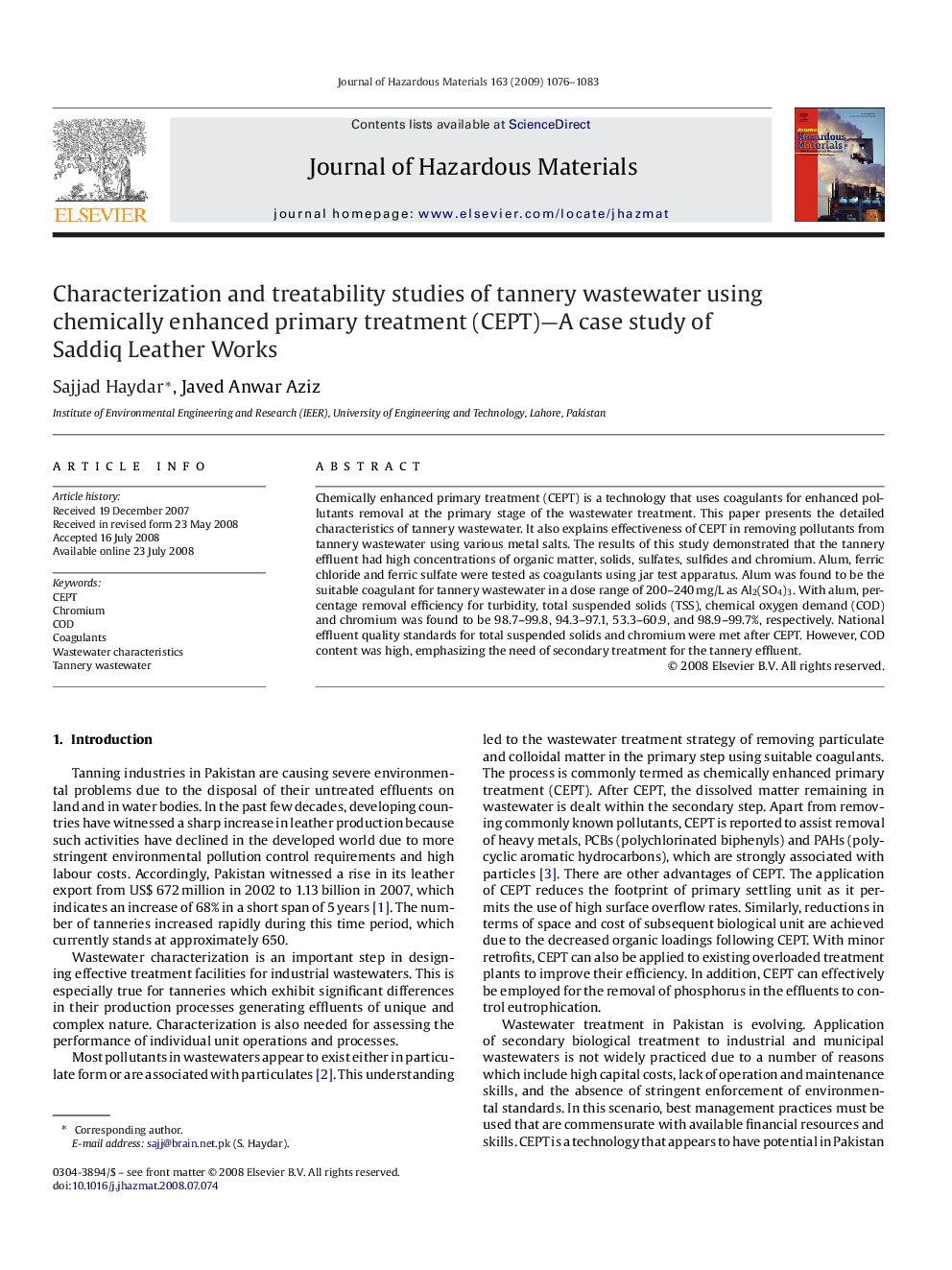| Article ID | Journal | Published Year | Pages | File Type |
|---|---|---|---|---|
| 582162 | Journal of Hazardous Materials | 2009 | 8 Pages |
Abstract
Chemically enhanced primary treatment (CEPT) is a technology that uses coagulants for enhanced pollutants removal at the primary stage of the wastewater treatment. This paper presents the detailed characteristics of tannery wastewater. It also explains effectiveness of CEPT in removing pollutants from tannery wastewater using various metal salts. The results of this study demonstrated that the tannery effluent had high concentrations of organic matter, solids, sulfates, sulfides and chromium. Alum, ferric chloride and ferric sulfate were tested as coagulants using jar test apparatus. Alum was found to be the suitable coagulant for tannery wastewater in a dose range of 200-240Â mg/L as Al2(SO4)3. With alum, percentage removal efficiency for turbidity, total suspended solids (TSS), chemical oxygen demand (COD) and chromium was found to be 98.7-99.8, 94.3-97.1, 53.3-60.9, and 98.9-99.7%, respectively. National effluent quality standards for total suspended solids and chromium were met after CEPT. However, COD content was high, emphasizing the need of secondary treatment for the tannery effluent.
Related Topics
Physical Sciences and Engineering
Chemical Engineering
Chemical Health and Safety
Authors
Sajjad Haydar, Javed Anwar Aziz,
